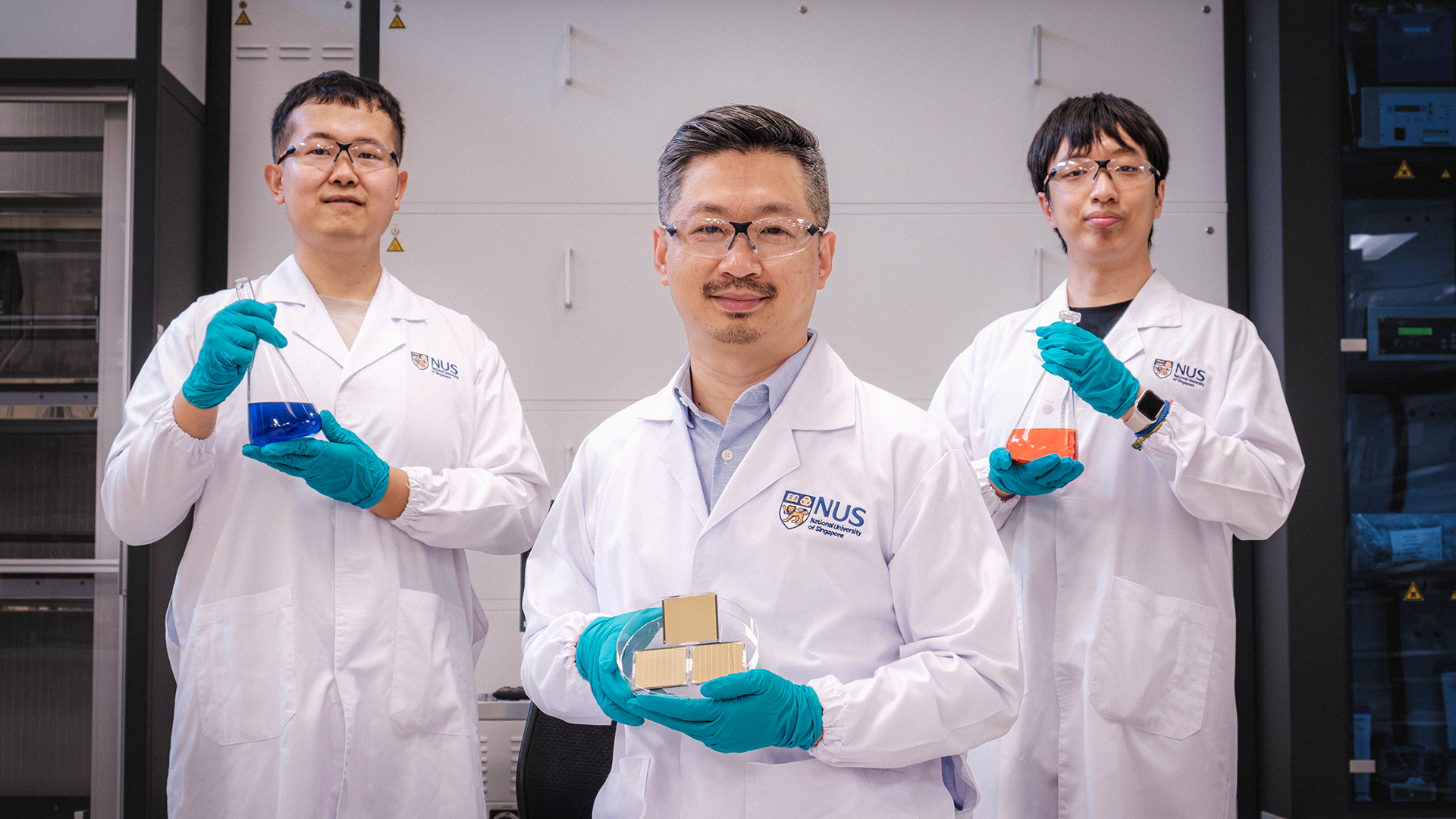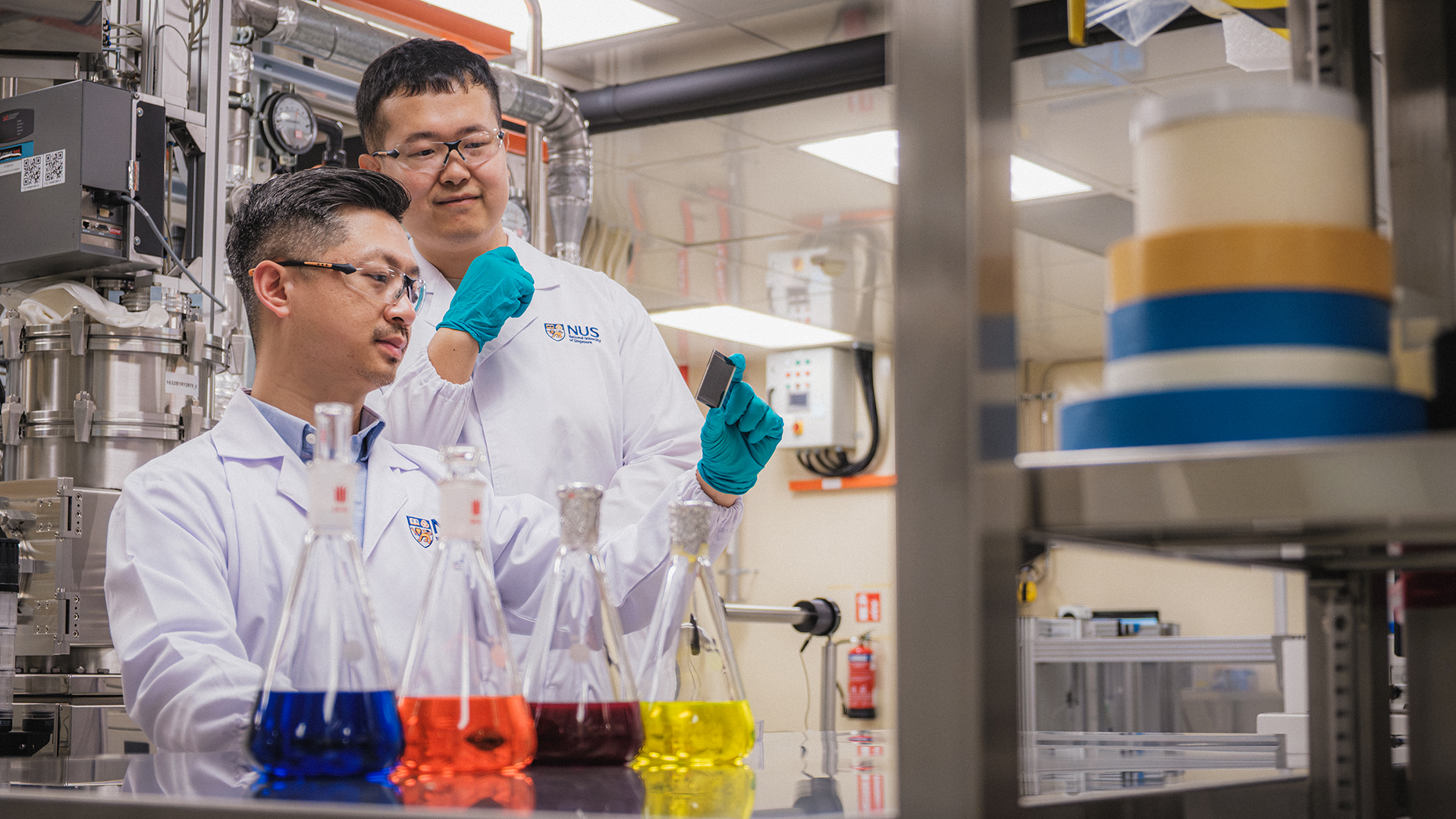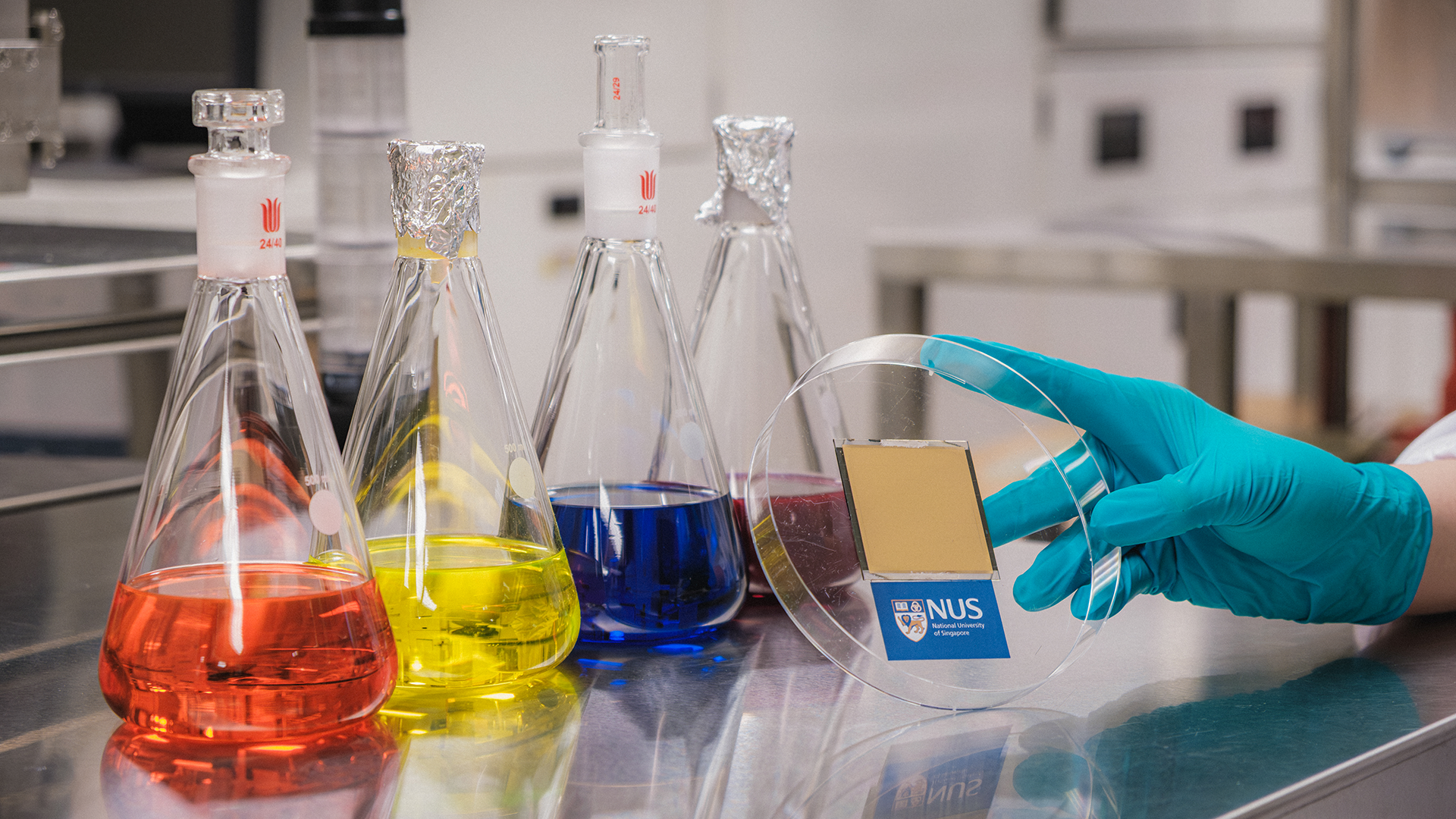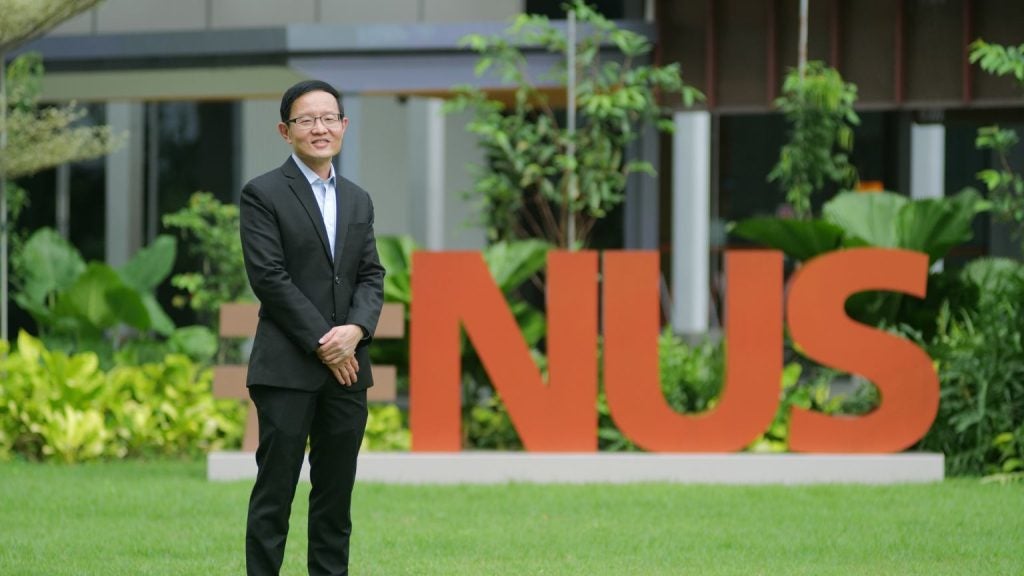
A perovskite–organic tandem solar cell with a certified world-record power conversion efficiency of 26.4 per cent over a one cm2 active area has been demonstrated by researchers at CDE.
The breakthrough makes it the highest-performing device of its kind to date and is driven by a newly designed narrow-bandgap organic absorber that significantly enhances near-infrared (NIR) photon harvesting, a long-standing bottleneck in thin-film tandem solar cells.
This achievement was made by a team led by Assistant Professor Hou Yi, a Presidential Young Professor in the Department of Chemical and Biomolecular Engineering at CDE, and head of the Perovskite-based Multijunction Solar Cells Group at the Solar Energy Research Institute of Singapore (SERIS) at NUS. The team published their work in the scientific journal Nature on 25 June 2025.

Perovskite and organic semiconductors both offer widely tunable bandgaps, enabling tandem cells to approach very high theoretical efficiencies.
“Thanks to their light weight and flexible form factor, perovskite–organic tandem solar cells are ideally suited to power applications that are run directly on devices such as drones, wearable electronics, smart fabrics and other AI-enabled devices,” said Asst Prof Hou.
However, the absence of efficient NIR thin-film absorbers – which help to capture sunlight in the NIR region more efficiently and hence improve the overall efficiency of tandem cells - has kept perovskite-organic tandem cells lagging behind alternative designs.
Harnessing the near-infrared
To overcome this challenge, Asst Prof Hou and his team developed an asymmetric organic acceptor with an extended conjugation structure, enabling absorption deep into the NIR region while maintaining a sufficient driving force for efficient charge separation and promoting ordered molecular packing.
Ultrafast spectroscopy and device physics analyses confirmed that this design achieves high free charge carrier collection with minimal energy loss.

Building on the organic subcell’s performance, the researchers stacked it beneath a high-efficiency perovskite top cell, interfacing the two layers with a transparent conducting oxide (TCO)-based interconnector.
The newly designed tandem cell achieved a power conversion efficiency of 27.5 per cent on 0.05-cm2 samples and 26.7 per cent on 1-cm2 devices, with the 26.4 per cent result independently certified.
These findings mark the highest certified performance to date among perovskite–organic, perovskite–CIGS, and single-junction perovskite cells at comparable size.
“With efficiencies poised to exceed 30 per cent, these flexible films are ideal for roll-to-roll production and seamless integration onto curved or fabric substrates — think self-powered health patches that harvest sunlight to run onboard sensors, or smart textiles that monitor biometrics without the need for bulky batteries,” said Asst Prof Hou.
In the next phase of their research, the team will focus on enhancing real-world operational stability and advancing towards pilot-line manufacturing - crucial steps in bringing flexible, high-performance solar technology to market.





